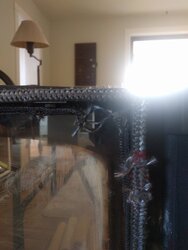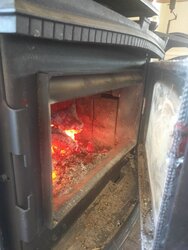Hi all,
I performed my pre-season maintenance on my PE Alderlea T5 by pulling the baffle, sweeping the chimney, and replacing the door & baffle gaskets.
With only 5 splits in the firebox, I lit it up and shut down the air once things got going. But it seems the air control is not controlling the air intake the way it normally does; stove is basically running away and going north of 700F stovetop on just 5 splits. This isn't normal, based on 3 prior years of running the T5.
Since this I cleaned the stove out, put stove cement on the ash door (I don't use it anyhow) and gave it another try; same result with runaway stove.
Wondering if I should suspect my door window gasket as a potential air leak now that the stove is a few years old? Where else should I look to verify I don't have uncontrolled air leaks?
I performed my pre-season maintenance on my PE Alderlea T5 by pulling the baffle, sweeping the chimney, and replacing the door & baffle gaskets.
With only 5 splits in the firebox, I lit it up and shut down the air once things got going. But it seems the air control is not controlling the air intake the way it normally does; stove is basically running away and going north of 700F stovetop on just 5 splits. This isn't normal, based on 3 prior years of running the T5.
Since this I cleaned the stove out, put stove cement on the ash door (I don't use it anyhow) and gave it another try; same result with runaway stove.
Wondering if I should suspect my door window gasket as a potential air leak now that the stove is a few years old? Where else should I look to verify I don't have uncontrolled air leaks?




